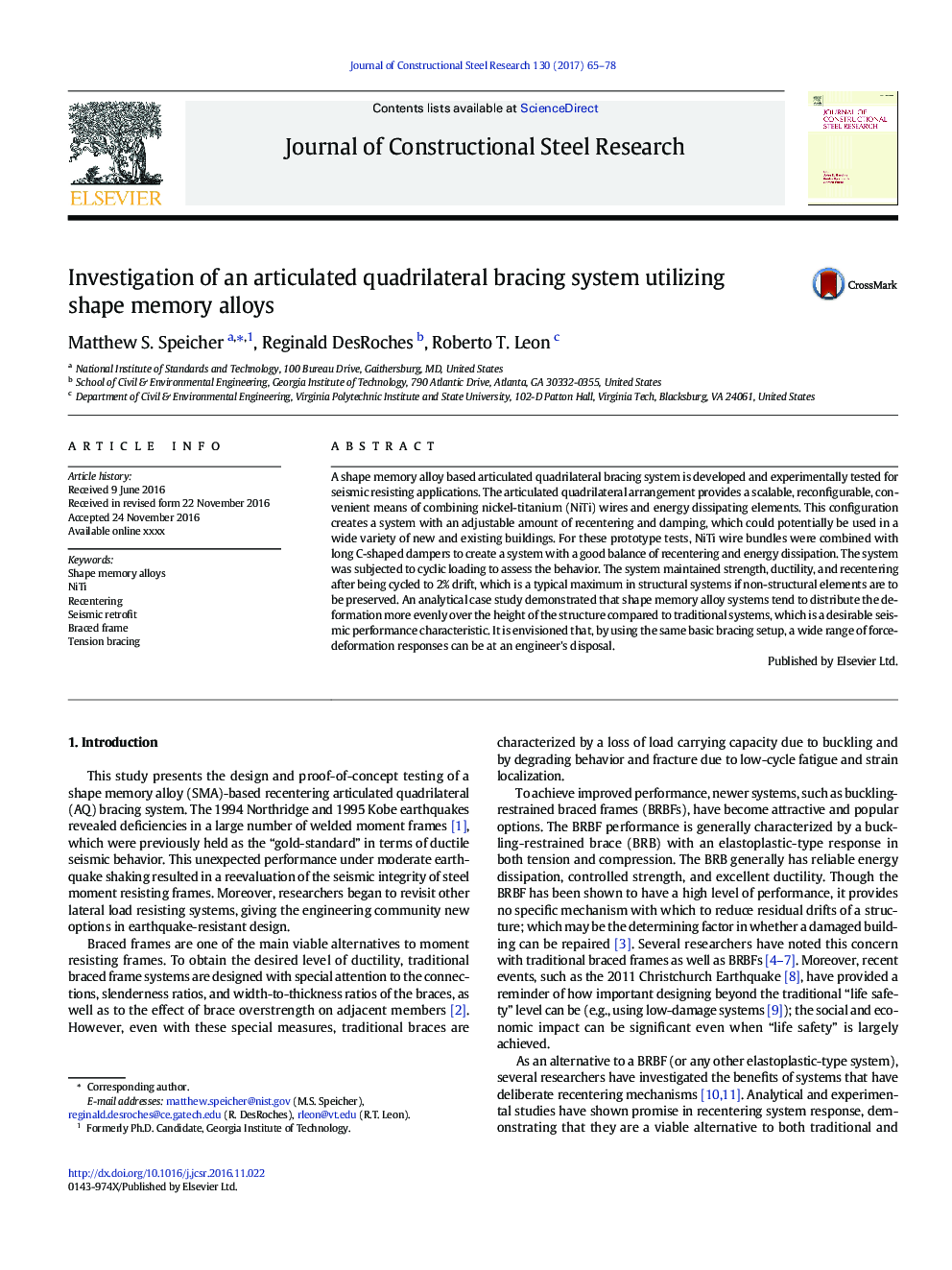| Article ID | Journal | Published Year | Pages | File Type |
|---|---|---|---|---|
| 4923524 | Journal of Constructional Steel Research | 2017 | 14 Pages |
Abstract
A shape memory alloy based articulated quadrilateral bracing system is developed and experimentally tested for seismic resisting applications. The articulated quadrilateral arrangement provides a scalable, reconfigurable, convenient means of combining nickel-titanium (NiTi) wires and energy dissipating elements. This configuration creates a system with an adjustable amount of recentering and damping, which could potentially be used in a wide variety of new and existing buildings. For these prototype tests, NiTi wire bundles were combined with long C-shaped dampers to create a system with a good balance of recentering and energy dissipation. The system was subjected to cyclic loading to assess the behavior. The system maintained strength, ductility, and recentering after being cycled to 2% drift, which is a typical maximum in structural systems if non-structural elements are to be preserved. An analytical case study demonstrated that shape memory alloy systems tend to distribute the deformation more evenly over the height of the structure compared to traditional systems, which is a desirable seismic performance characteristic. It is envisioned that, by using the same basic bracing setup, a wide range of force-deformation responses can be at an engineer's disposal.
Related Topics
Physical Sciences and Engineering
Engineering
Civil and Structural Engineering
Authors
Matthew S. Speicher, Reginald DesRoches, Roberto T. Leon,
